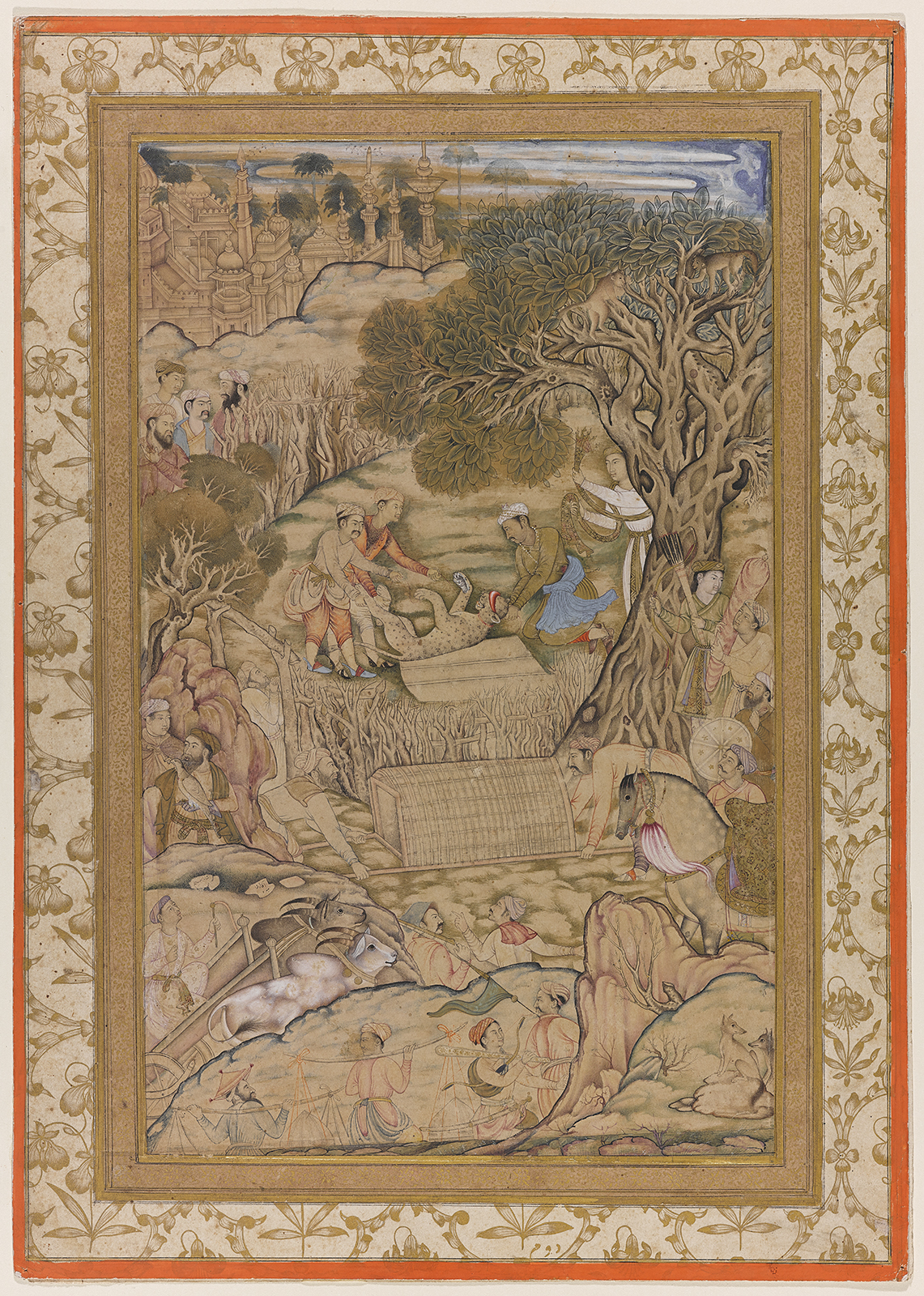Click on the image to zoom
Salim and the Captured Cheetah
- Accession Number:AKM166
- Creator:signed by Aqa Reza
- Place:India
- Dimensions:27.5 x 38.8 cm
- Date:ca. 1602
- Materials and Technique:ink and opaque watercolour on paper
This single-page drawing depicts a striking hunting scene that features Prince Salim, son of Mughal Emperor Akbar (1556–1605). Recognizable from the startling blue of his outer garment, the prince kneels and holds the blindfolded cheetah’s head while two servants grip its rear legs. Prince Salim’s fascination with animals and hunting was recorded later in his memoirs when he ascended to the Mughal throne in 1605 under the regnal name of Jahangir.[1] Cheetahs were captured alive for training as hunting animals. Like falcons, they were kept blindfolded until required for the chase. Among the favourite topics of Mughal artists in drawings and paintings were animals: elegant horses, falcons, and cheetahs for courtly hunting. The presence of the crown prince in the drawing emphasizes the importance of the topic, his courage, and his passion for hunting.
Further Reading
The drawing bears inscriptions on the left on the two small rocks above the cart, reading: “Aqa Reza, the servant of Shah Salim.” The tradition of this kind of epithet has its origin with Timurid and early Safavid artists and continued until the middle of the 17th century.
The rebel prince Salim set up a royal workshop or atelier at Allahabad in direct competition with his father’s official court at Agra. At the court workshop of Allahabad were master artists, including the Iranian artist Aqa Reza as chief master. He had been trained in the Herat style and entered the courtly workshop of Akbar in 1584. Aqa Reza shows in his drawings the Iranian elements in which he was trained and the Mughal elements he learned in India, such as the depiction of the distant city with its complex architecture. He also used nim qalam (half-pen), his favoured technique.[2] Nim qalam (half-pen) is a method of creating drawings as finished works, a kind of tinted drawing. The technique is closely related to European grisaille, a method of painting or drawing in grey monochrome, often to imitate sculpture.
Salim contributed to the prosperity of Allahabad; Akbar had developed the ancient and strategically located city into a major military centre after 1574. Later, Allahabad would be the capital of the province of the same name.
— Filiz Çakır Phillip
Notes
[1] Anthony Welch and Stuart Cary Welch, Arts of the Islamic Book: The Collection of Prince Sadruddin Aga Khan (Ithaca, NY: Cornell University Press, 1982), 181.
[2] Almut von Gladiss, Albumblätter: Miniaturen aus den Sammlungen indo-islamischer Herrscherhöfe (Munich: Edition Minerva/Staatliche Museen zu Berlin [hrsg.], 2010), 20.
References
Phillip, Filiz Çakır. Enchanted lines: drawings from the Aga Khan Museum collection. 2014. ISBN: 9780991992874
Welch, Anthony, and Stuart Cary Welch. Arts of the Islamic Book: The Collection of Prince Sadruddin Aga Khan. Ithaca, NY: Cornell University Press, 1982. ISBN: 9780801498824
von Gladiss, Almut. Albumblätter: Miniaturen aus den Sammlungen indo-islamischer Herrscherhöfe. Munich: Edition Minerva/Staatliche Museen zu Berlin [hrsg.]), 2010. ISBN: 9783938832684
Note: This online resource is reviewed and updated on an ongoing basis. We are committed to improving this information and will revise and update knowledge about this object as it becomes available.


